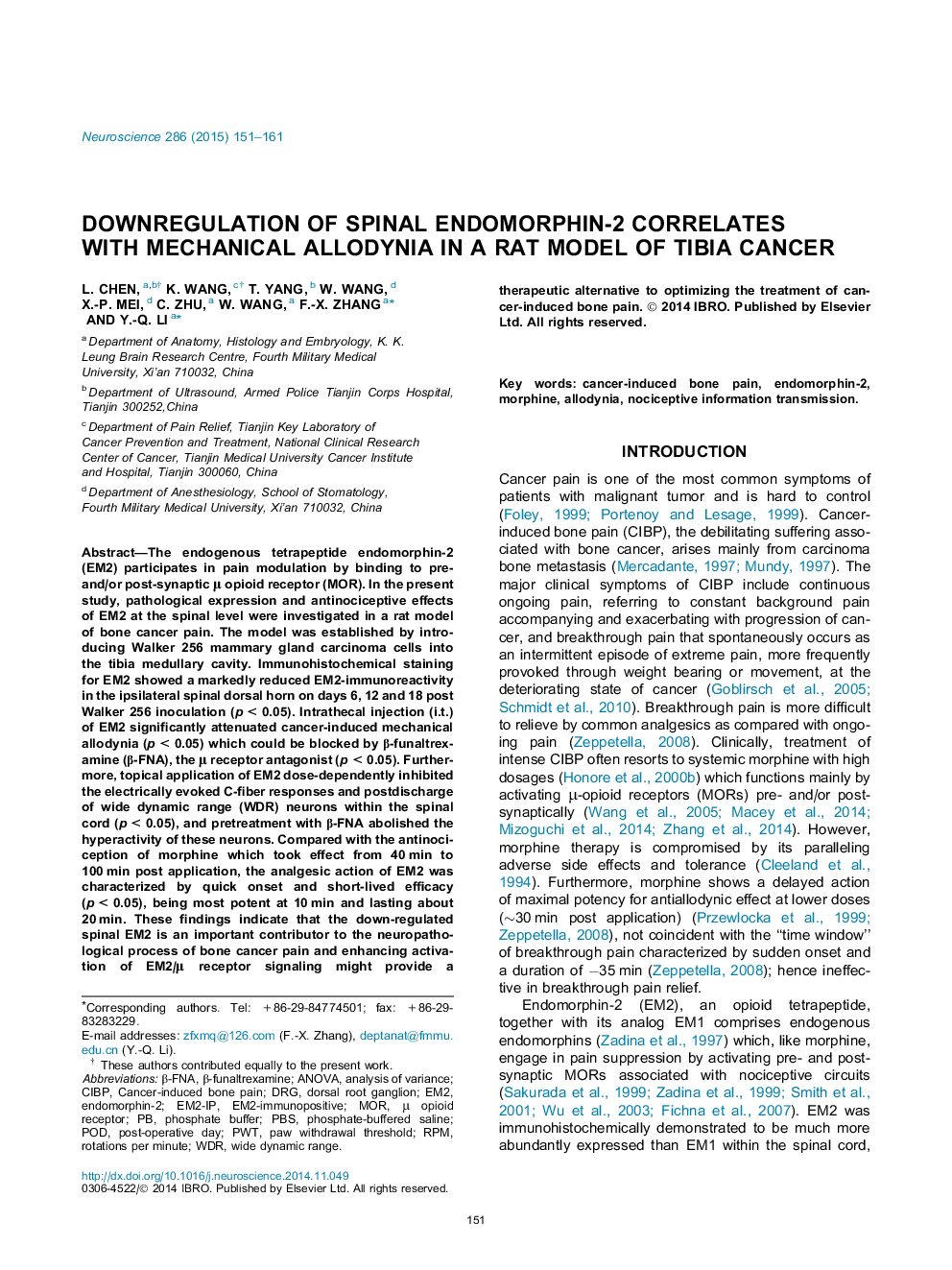| Article ID | Journal | Published Year | Pages | File Type |
|---|---|---|---|---|
| 6273126 | Neuroscience | 2015 | 11 Pages |
Abstract
The endogenous tetrapeptide endomorphin-2 (EM2) participates in pain modulation by binding to pre- and/or post-synaptic μ opioid receptor (MOR). In the present study, pathological expression and antinociceptive effects of EM2 at the spinal level were investigated in a rat model of bone cancer pain. The model was established by introducing Walker 256 mammary gland carcinoma cells into the tibia medullary cavity. Immunohistochemical staining for EM2 showed a markedly reduced EM2-immunoreactivity in the ipsilateral spinal dorsal horn on days 6, 12 and 18 post Walker 256 inoculation (p < 0.05). Intrathecal injection (i.t.) of EM2 significantly attenuated cancer-induced mechanical allodynia (p < 0.05) which could be blocked by β-funaltrexamine (β-FNA), the μ receptor antagonist (p < 0.05). Furthermore, topical application of EM2 dose-dependently inhibited the electrically evoked C-fiber responses and postdischarge of wide dynamic range (WDR) neurons within the spinal cord (p < 0.05), and pretreatment with β-FNA abolished the hyperactivity of these neurons. Compared with the antinociception of morphine which took effect from 40 min to 100 min post application, the analgesic action of EM2 was characterized by quick onset and short-lived efficacy (p < 0.05), being most potent at 10 min and lasting about 20 min. These findings indicate that the down-regulated spinal EM2 is an important contributor to the neuropathological process of bone cancer pain and enhancing activation of EM2/μ receptor signaling might provide a therapeutic alternative to optimizing the treatment of cancer-induced bone pain.
Keywords
Related Topics
Life Sciences
Neuroscience
Neuroscience (General)
Authors
L. Chen, K. Wang, T. Yang, W. Wang, X.-P. Mei, C. Zhu, W. Wang, F.-X. Zhang, Y.-Q. Li,
